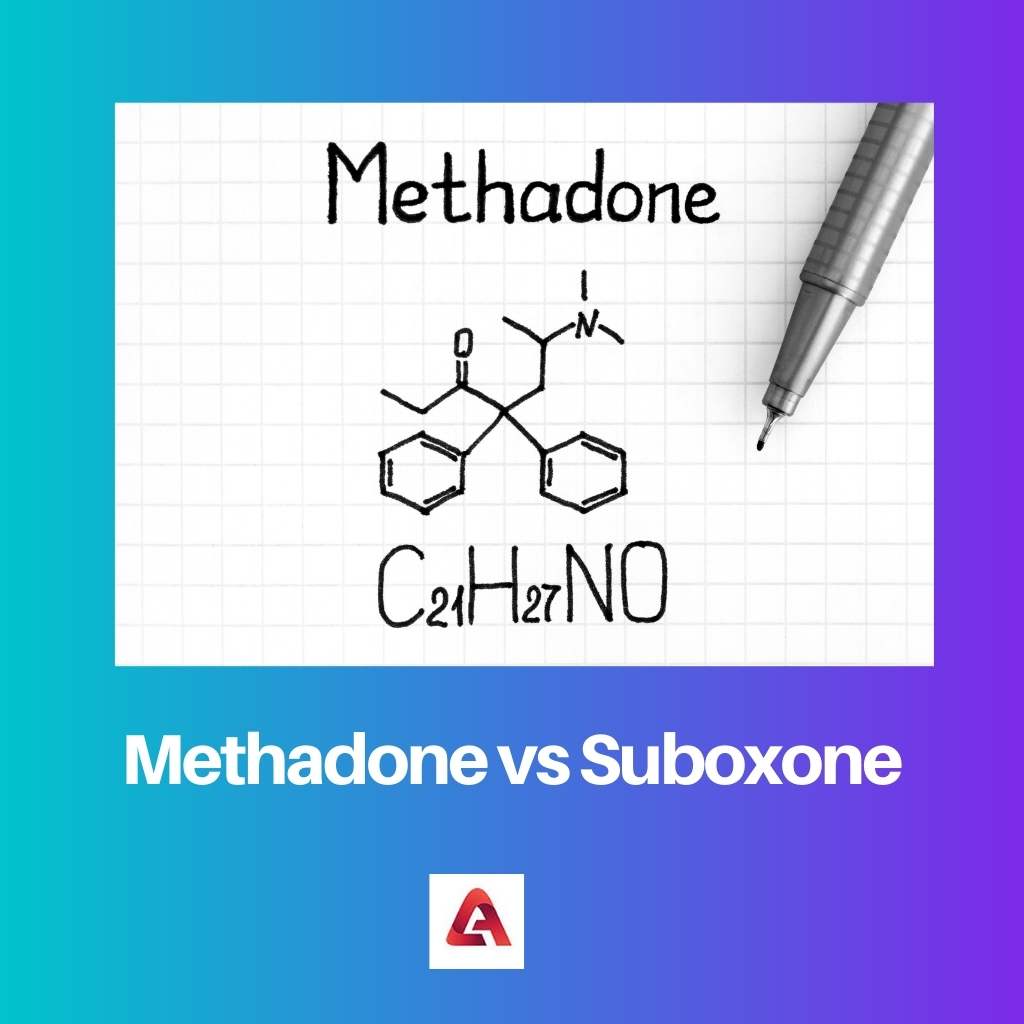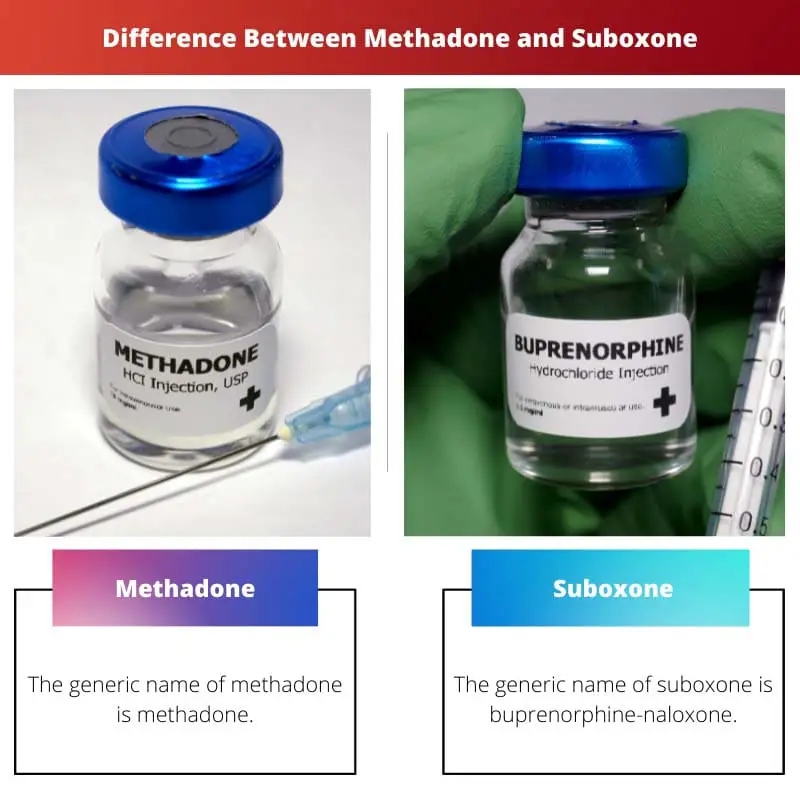Chronic pain tends to be the time of pain that lasts for a long time. Methadone and Suboxone are both opioids, which are a kind of strong medication that is mostly prescribed to help relieve such chronic pain.
One must be careful because even though they are efficacious, such medications can also develop a habit that will further lead to addiction or too much depiction whenever in pain. Methadone and suboxone are both very effective painkillers.
Key Takeaways
- Methadone is a full opioid agonist, while Suboxone contains a partial opioid agonist (buprenorphine) and an opioid antagonist (naloxone).
- Suboxone reduces the risk of overdose and abuse due to the presence of naloxone.
- Methadone requires daily visits to a clinic, whereas Suboxone offers more flexible treatment options, including at-home prescriptions.
Methadone vs Suboxone
Methadone is a strong medication that treats opioid addiction and chronic pain. It comes in the form of tablets or a solution that acts as a painkiller. Suboxone is an approved medication used to treat opioid use disorder. Its side effects may include vomiting, headaches and dizziness.

Methadone comes with a lot of benefits to relieve chronic pain. The effects of methadone are gradual and mild, which results in making this drug a safer replacement for opioids of abuse during treatment.
Methadone is available in the form of an oral tablet and solution, sometimes oral concentration with injections, which help in relieving the dependence. Dependence means when your body physically adapts to a drug and can tolerate it.
Suboxone comes as an oral film, which is a synthetic opioid. It was created with the primary purpose of helping to fight addiction, and proposed its generic name, buprenorphine-naloxone, as it has a ratio of 8:2 each.
The main purpose is to block the effects of opioids, which are taken for chronic pain but end up developing dependence.
Comparison Table
| Parameters of Comparison | Methadone | Suboxone |
|---|---|---|
| Generic Name | The generic name of methadone is methadone. | The generic name of suboxone is buprenorphine-naloxone |
| Brand Name | Dolophine, Methadone HCl Intensol, Methadose are the brand names of methadone. | Suboxone, Bunavail, Zubsolv are the brand name. |
| Treats what | Chronic pain and opioid addiction are treated by methadone. | Opioid dependence is treated by Suboxone. |
| Approved | Even though methadone helps in releasing opioid addiction but it is not an approved medication. | Suboxone is an approved and prescribed medication to deal with opioid dependence. |
| Side Effects | Side effects of methadone are drowsiness, irregular heartbeat, seizures, etc. | Side effects of suboxone are headache, insomnia, vomiting, etc. |
What is Methadone?
Methadone has the generic name of methadone and comes in the form of oral tablets, oral solutions, etc. Usually, methadone has effects that are usual and mild.
A safe replacement of the drug in place for other opioids of abuse is created during the treatment. However, methadone is only approved to treat chronic pain and get relief, and that is why it is available at some pharmacies but not all.
Methadone is said to occupy the opioid receptor, which extends sites in the brain. This incident prevented people taking it from coming into contact with other opioids, such as heroin.
Moreover, the sudden onset of uncomfortable opioid withdrawal symptoms, including nausea and vomiting, will eventually help stop them.
Once a withdrawal is managed, it allows users to focus on the development of therapeutic motivation for addiction treatment.
It also addresses any underlying issues that might lead to their misuse of opioids. This eventuality is why methadone is known as a complete opioid agonist.
The meaning of methadone being an agonist of opioids means that it will bind to the opioid receptors inside the brain and then activate it. This issue only produces a chemical reaction, making users vulnerable to dependence.

What is Suboxone?
Suboxone is like methadone and is categorized as a synthetic opioid. Many similar drugs have been made to relieve pain directly in the first place, but unlike them, suboxone is used first to control dependence.
This fact is because it was discovered later to have an effect in regard to opioid dependence. Hence, Suboxone was created with the main implementing goal to help fight addiction for users and not just the pain.
Suboxone has a generic name, buprenorphine-naloxone, which is why the drug is made with 80 percent buprenorphine and 20 percent naloxone. It also has a partial opioid agonist, which makes Suboxone block the effects of opioids.
It works in a strategic way, and here is how. When one takes the Suboxone, buprenorphine, it ties to the effector inside the brain and activates them. This is done only to relieve withdrawal symptoms.
The naloxone, on the other hand, slabs the effect of opioids and helps in keeping the body from reminiscing any high effects.
This is why certain studies show that Suboxone is said to have a positive effect on the lives of users who are recovering from opioid addiction. It is, therefore, believed that Suboxone plays an integral role in keeping those users away from opioid abuse.

Main Differences Between Methadone and Suboxone
- Methadone has a generic name known as Methadone itself, which is a name derivation. On the other hand, Suboxone has a generic name known as buprenorphine-naloxone.
- Methadone is known to treat chronic pain and opioid addiction but is not always a prescribed medication. Suboxone is known to treat opioid dependence and is an approved medication.
- Methadone is an effective painkiller to deal with addiction, whereas Suboxone is a synthetic opioid.
- Some of the side effects of methadone are drowsiness, sexual impotence, seizures, and irregular heartbeat, whereas some of the side effects of Suboxone are vomiting, headache, dizziness, etc.
- Dolphin and Methadose are the brand names of methadone, while Suboxone has brand names such as Zubslov.





